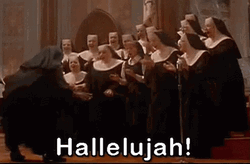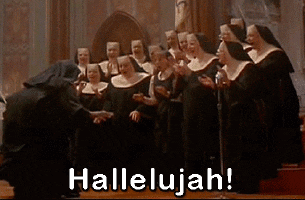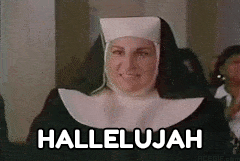Exploring The Heart Of Hallelujah: John Cale's Iconic Lyrics
Have you ever stopped to think about a song that just, well, lives inside you? For so many, that song is "Hallelujah." It is a piece of music that has touched millions, a tune that seems to carry a bit of everything: joy, sorrow, questioning, and a deep sense of something shared. When we talk about this incredible song, the version by John Cale often comes up first for many people, and for good reason. His take on the lyrics, a very particular selection from Leonard Cohen's vast original writing, gave the song a whole new life, really. It made a profound mark, shaping how countless listeners would come to know this powerful piece.
It's interesting, how a song can change so much in its journey, isn't it? John Cale's recording of "Hallelujah" is a pivotal moment in that story. His interpretation, with its sparse piano and raw vocal delivery, brought a certain kind of vulnerability to the tune. This version, which came out in 1991 on a tribute album, actually helped bring Leonard Cohen's original creation to a much wider audience. It was almost like a quiet whisper that turned into a powerful roar, so to speak, truly.
This particular version, with its specific lyrical choices, shows us just how much a performer can influence a song's meaning. Cale's approach to the words, picking out certain lines and leaving others, highlights different parts of the song's emotional landscape. It's a testament to the song's adaptable nature, how it can mean so many things to so many people, yet still hold its core message. We are going to look closer at what made Cale's lyrics so special, and how his version helped shape the song's lasting legacy, you know.
Table of Contents
- John Cale: A Look at the Artist Behind the Hallelujah Cover
- The Genesis of a Masterpiece: Cohen's Original Hallelujah
- John Cale's Hallelujah: The Lyrics That Changed Everything
- The Meaning Behind the Words: Hallelujah in Context
- The Impact and Legacy of Cale's Hallelujah
- Frequently Asked Questions About Hallelujah John Cale Lyrics
John Cale: A Look at the Artist Behind the Hallelujah Cover
John Cale is a name that really stands out in music, especially if you appreciate experimental sounds and thoughtful songwriting. He is a Welsh musician, composer, and record producer, known for his work with The Velvet Underground, which was a very influential band, actually. Cale's career has been quite diverse, spanning many different genres and collaborations. He is someone who always seems to push boundaries, often mixing classical training with rock and avant-garde ideas. His musical journey is a long one, full of innovation and a distinct artistic voice, so to speak.
Before his "Hallelujah" cover became so well-known, Cale had already built a strong reputation as a talented artist. He played a big part in shaping the sound of early alternative music. His solo work is often very personal and reflective, showing a deep understanding of human emotion. This background, this way of looking at music and life, very much informed his approach to "Hallelujah." It was not just another cover for him; it was a chance to bring his own unique perspective to a song he clearly admired, you know.
John Cale: Personal Details and Bio Data
| Full Name | John Davies Cale |
| Born | March 9, 1942 |
| Birthplace | Garnant, Carmarthenshire, Wales |
| Occupation | Musician, Composer, Record Producer |
| Notable Works | The Velvet Underground, Paris 1919, Music for a New Society |
| Instruments | Vocals, Piano, Viola, Guitar, Bass |
The Genesis of a Masterpiece: Cohen's Original Hallelujah
To really appreciate John Cale's version of "Hallelujah," it helps to understand the song's beginnings. Leonard Cohen, the Canadian singer-songwriter, wrote the original. He released it on his album "Various Positions" back in 1984. Now, it's interesting, because that song, which is one of the most enduring songs ever, did not achieve much initial success. It was, in some respects, underappreciated for a full decade after Cohen wrote it. This is a bit surprising when you think about how famous it is today, isn't it?
Cohen spent a lot of time on "Hallelujah," reportedly writing many, many verses. The song itself is quite complex, full of biblical references, emotional struggles, and reflections on faith and doubt. It goes like this: "I've heard there was a secret chord that David played and it pleased the Lord." This line, often a starting point for discussions about the song, hints at its deep roots in ancient stories and spiritual longing. Cohen's original was a sprawling, multi-layered piece, a true lyrical tapestry, really.
The song's initial lack of widespread attention meant it was ripe for rediscovery. Cohen's version was beautiful, of course, but it had a certain quiet intensity that perhaps did not immediately grab mainstream audiences. It was a song that needed time, and perhaps a different voice, to truly find its way into the hearts of people everywhere. This is where John Cale comes into the picture, as a matter of fact, almost.
John Cale's Hallelujah: The Lyrics That Changed Everything
When John Cale decided to cover "Hallelujah," he did something rather unique. He did not just sing Cohen's original as it was. Instead, according to Cale, after receiving 15 pages of lyrics (after asking Cohen to fax them over), he "went through and just picked out the cheeky verses" to include in his cover. This was a very deliberate choice, a way of shaping the song to fit his own artistic vision. It shows a deep engagement with the source material, a thoughtful selection process, you know.
This selection of verses is what makes Cale's version so distinctive. He chose lines that spoke to a different kind of "Hallelujah"—one that felt more human, perhaps a little more broken, and definitely more questioning. For example, lines like "But you don't really care for music, do you" and "But now you never show it to me, do you" add a layer of personal pain and disillusionment. These lines, among others, shift the focus from a purely spiritual narrative to one that also explores relationships and the complexities of human connection, so to speak.
The choice to focus on these particular lyrics gave Cale's rendition a raw, almost conversational feel. It's as if he is speaking directly to someone, or perhaps to himself, grappling with feelings of loss or misunderstanding. This approach resonated deeply with listeners, turning the song into something both grand and intimately personal. It is a powerful example of how interpretation can completely transform a piece of art, really.
The "Cheeky Verses": Cale's Deliberate Choices
The phrase "cheeky verses" is interesting, isn't it? It suggests a certain playfulness, perhaps even a bit of defiance in Cale's selection. He pulled out lines that were less about grand biblical narratives and more about the messy reality of human experience. For instance, the inclusion of "I've seen your flag on the marble arch" brings in an image that feels very real and grounded, almost like a specific memory. This grounds the song in a tangible, relatable world, actually.
The verses Cale chose often explore themes of love, betrayal, and the struggle to find meaning in a world that can feel indifferent. Consider the line, "I've heard there was a secret chord that David played and it pleased the lord but you don't really c." This incomplete thought, as it appears in some lyrical representations, or the full "but you don't really care for music, do you," immediately introduces a sense of skepticism or disconnect. It's not just about the secret chord anymore; it's about someone who just does not seem to appreciate it, which is kind of sad, really.
These choices highlight the song's capacity to be both sacred and profane, spiritual and earthly. Cale understood that the "Hallelujah" in Cohen's song was not always a shout of pure joy or praise. Sometimes, it was a sigh, a question, or even a lament. His version truly brings out that multifaceted nature, making it a song that speaks to a wide range of human emotions, very much so.
"A Cold and a Broken Hallelujah": Interpreting Cale's Version
One of the most memorable lines Cale included is "It's a cold and it's a broken hallelujah." This phrase captures the essence of his interpretation. It suggests that even in moments of praise or acceptance, there can be pain, imperfection, or a sense of weariness. This is not the triumphant "Hallelujah" you might hear in a church; it is one born from struggle, from life's difficult moments. It is a very human expression, really.
The simplicity of Cale's arrangement also helps convey this feeling. His piano playing is sparse, letting the words and his voice carry the weight of the emotion. There is a raw honesty to it, a sense that he is laying bare the song's emotional core without any frills. This stripped-down approach allows the listener to truly focus on the lyrical content, to hear every word and feel its impact, so to speak. It is quite powerful, actually.
This particular rendition paved the way for many others, including the widely popular version by Jeff Buckley. Buckley, in fact, heard Cale's version and was inspired by it, adopting many of the same lyrical choices. This chain of influence shows just how significant Cale's interpretation was in shaping the song's journey through popular culture. It is a bit like a ripple effect, truly.
The Meaning Behind the Words: Hallelujah in Context
The word "Hallelujah" itself is quite ancient and carries a lot of meaning. It is an interjection from the Hebrew language, meaning "praise Yah" or "praise the Lord." It is often used to express praise, joy, or thanks, you know. But in Cohen's song, and especially in Cale's chosen lyrics, the word takes on a much broader and sometimes more ambiguous meaning. It is not always a simple shout of joy, really.
When you hear lines like "It's a cold and it's a broken hallelujah," the word becomes a descriptor for a state of being, a complex emotional response, rather than just an exclamation. It shows how the sacred can intertwine with the secular, how faith can exist alongside doubt, and how joy can be mixed with sorrow. The song explores the human condition in all its messy glory, very much so.
The lyrics also touch on themes of love, desire, and the search for connection. Phrases like "Hallelujah, hallelujah hallelujah, hallelujah baby, I've been here before I know this room, and I've walked this floor you see, I used to live alone before I knew you and I've seen your flag on a" paint a picture of a relationship, perhaps one that has seen its ups and downs. The "Hallelujah" here could be a recognition of shared history, a sigh of resignation, or even a quiet celebration of endurance, which is quite interesting, actually.
Lyricalchord is here with John Cale's Hallelujah lyrics and chords, allowing you to sing along with your guitar and enjoy! This shows how much people want to connect with the song on a personal level, to understand its structure and play it themselves. The lyrics video for "Hallelujah" by John Cale, encouraging likes and comments, also shows this desire for engagement and shared appreciation, truly. It is a very interactive experience, really.
The Impact and Legacy of Cale's Hallelujah
John Cale's rendition of "Hallelujah" did not just become popular; it fundamentally changed the song's trajectory. Before Cale, it was a cult favorite among Cohen's fans. After Cale, and then Buckley, it became a global phenomenon, a song performed by countless artists and heard in movies and television shows. It is a rare example of a cover version that completely redefines the original's public perception, almost.
His choice of "cheeky verses" highlighted the song's versatility and its universal themes. It showed that "Hallelujah" was not just a religious song, or just a love song, but a song about the human spirit's resilience and its capacity for both profound joy and deep melancholy. This broadened its appeal immensely, making it accessible to a much wider audience, you know.
The enduring popularity of Cale's version, and the versions it inspired, speaks volumes about its power. It is a song that continues to resonate because it speaks to something fundamental about the human experience. Whether it is the quiet contemplation of "What's real and going on below" or the recognition of shared history in "I've been here before I know this room," Cale's lyrical choices helped solidify "Hallelujah" as a timeless anthem for all seasons of life, very much so. You can learn more about Hallelujah's history, its various cover versions, including from Jeff Buckley, and its enduring appeal.
The way the song spread, from Cohen's initial release to Cale's interpretation and then to others, is a fascinating story in itself. It is a reminder that art often takes its own path, sometimes finding its true audience years after its creation. John Cale's contribution was absolutely vital in that journey, providing a bridge from Cohen's profound original to the song's status as a modern classic, so to speak. It is a really interesting chain of events, truly.
To learn more about Hallelujah on our site, and to find more of John Cale's lyrics, you can explore other pages. You can also watch the official video for "Hallelujah" by John Cale, or print or download the text in PDF format, which is very convenient, actually. It is a good way to really dig into the song, you know.
Frequently Asked Questions About Hallelujah John Cale Lyrics
People often have questions about John Cale's version of "Hallelujah," given its unique place in the song's history. Here are a few common ones, as a matter of fact:
What lyrics did John Cale use for Hallelujah?
John Cale specifically chose a selection of verses from Leonard Cohen's extensive original writings for "Hallelujah." According to Cale himself, he picked out what he called the "cheeky verses." These included lines like "But you don't really care for music, do you," "I've seen your flag on the marble arch," and "It's a cold and it's a broken hallelujah." These choices focused on more personal and sometimes cynical aspects of love and faith, departing from some of Cohen's more overtly biblical or spiritual lines, you know.
Is John Cale's Hallelujah the original?
No, John Cale's "Hallelujah" is not the original version. The song was originally written and released by Canadian singer-songwriter Leonard Cohen on his 1984 album "Various Positions." John Cale's cover version, released in 1991 on a tribute album to Cohen, was instrumental in bringing the song to a wider audience and influenced many subsequent covers, including the very famous one by Jeff Buckley, which is interesting, really.
Why is John Cale's version of Hallelujah so important?
John Cale's version of "Hallelujah" is very important because it gave the song a new life and helped it achieve widespread recognition. His sparse piano arrangement and raw vocal delivery brought a different emotional depth to the lyrics. By selecting specific verses, Cale highlighted the song's themes of human struggle, doubt, and flawed relationships, making it more relatable to a broader audience. This interpretation then inspired other artists, most notably Jeff Buckley, to cover the song, solidifying its place as a modern classic, very much so.

Hallelujah GIFs | GIFDB.com

Hallelujah GIFs | USAGIF.com

Hallelujah GIFs | USAGIF.com